The "Olivette" an imitation of small and medium sized Mayfly nymphs.
This nymph is based on the Spanish nymph the Perdigon but with a bit of extra inherent movement to make it irresistible to trout. As seen in our latest You tube video it works very well. The Polish hand stripped quill body adds a very convincing segmentation effect.
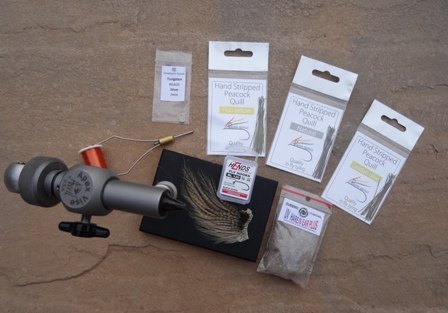 |
Materials required: Roman Moser power silk orange (or other orange thread), Hends Bl 120 size16 hooks, Onstream guide 2mm silver Tungsten beads, Polish stripped quill (fluo yellow, yellow, natural or golden olive).UV hares ears plus natural (light or dark), Coq de Leon for the tail (partridge hackles work well). Most materials are available here. |
|
Add a 2 mm silver tungsten bead to the jig hook. Tie in the thread and add a few Coq de Leon fibres for a tail. Tie in a few mm's of a stripped peacock quill as illustrated. |
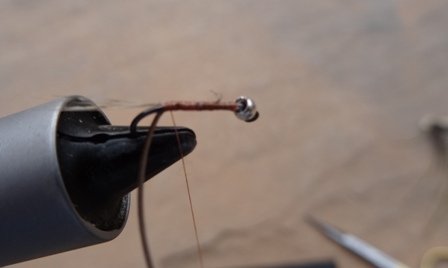 |
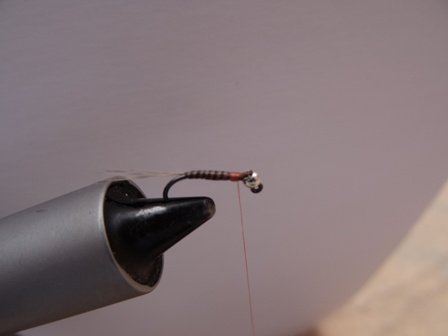 |
Turn the stripped peacock quill toward the eye of the hook using touching turns as shown. Within 4 mm of the bead, tie off the stripped quill with several turns of thread and trim the tag end. You should be left with something like this. At this stage you can add a coat of UV curing resin (bug bond etc.) if preferred. This prevents its destruction by trouts teeth. If you do zap and cure the UV resin with a UV source. |
|
Tie in the tips of a CdC feather as shown. Complete two full turns with the CdC feather and firmly tie off. Trim the CdC stalk. |
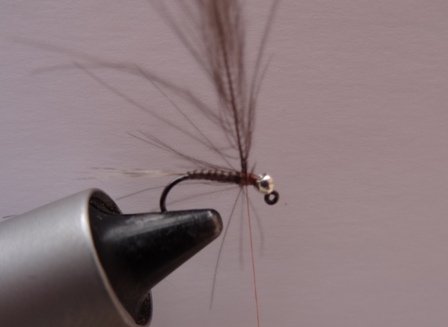 |
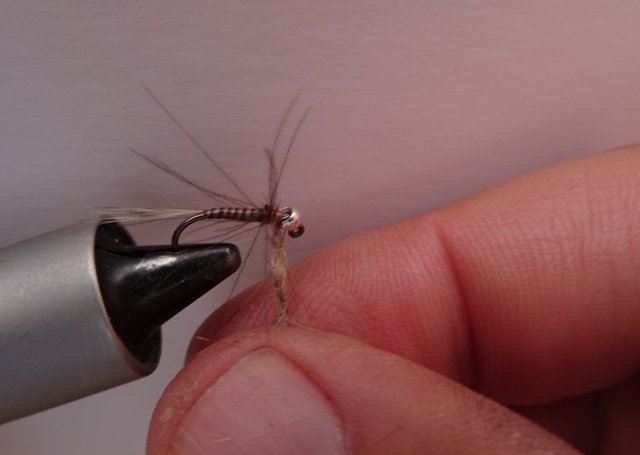 |
Finger dub some UV hares ear plus dubbing either 01 Natural light or 02 Dark natural to form the thorax of the nymph. This dubbing finger dubs very easily and gives an excellent finished effect. |
|
Whip finish with the thread behind the tungsten bead and trim. This nymph has a slim profile sinks quickly but includes a bit of movement. |
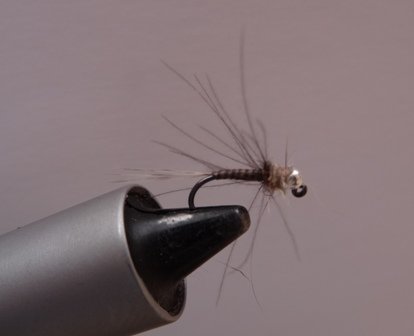 |
This scraggy effect seems very popular with fish. This is a nymph that has caught well in low clear conditions. It works very well as a duo nymph supported under a dry fly..